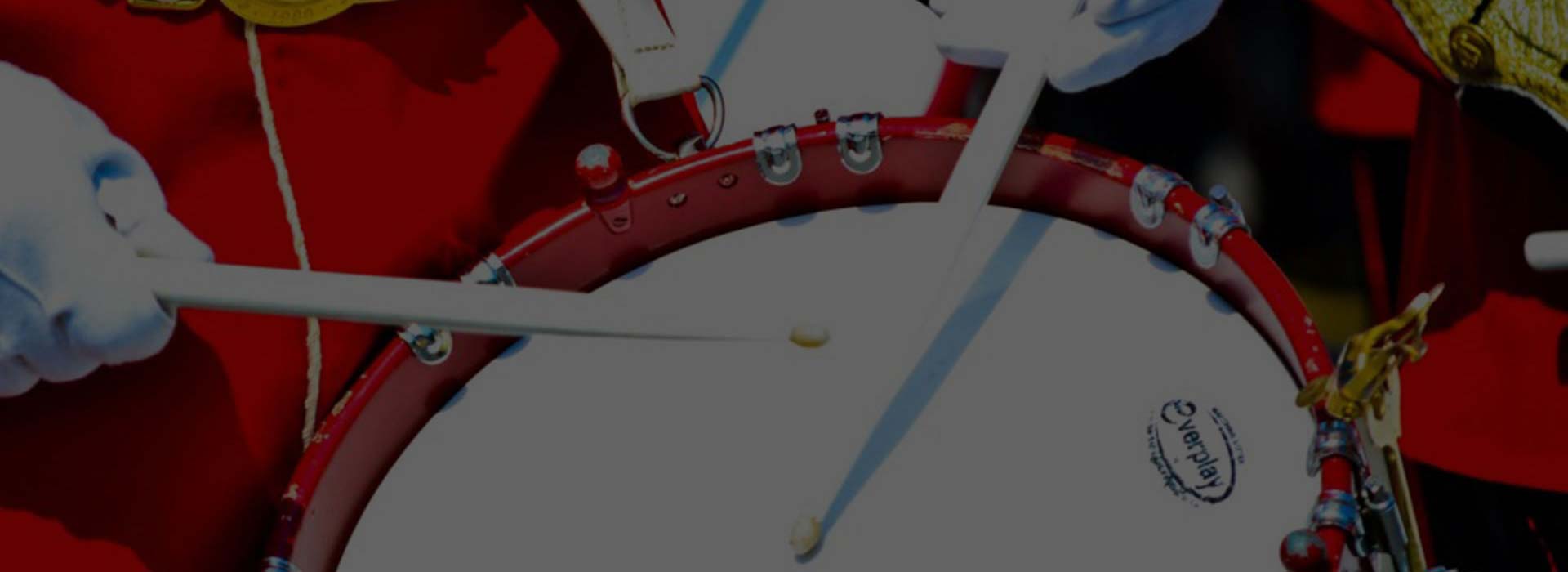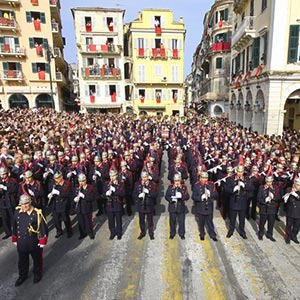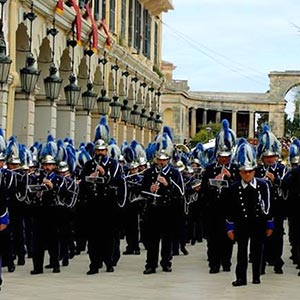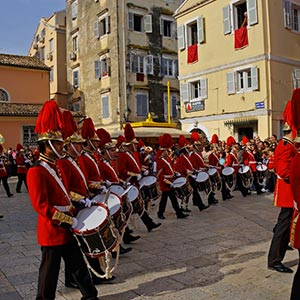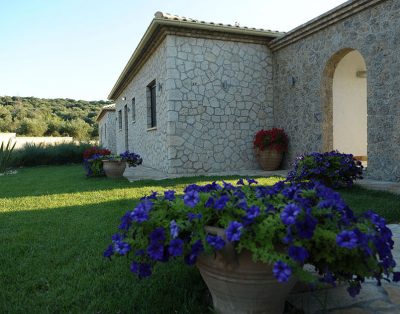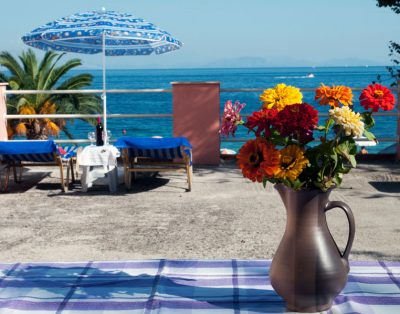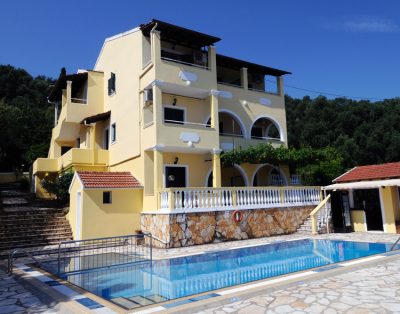The Three City Philharmonics
A marching band from Austria, a frequent visitor, through the Corfu landmark of Liston. In the background the western arch of Palace of St. Michael and St. George.
Corfiote musical tradition is significant. In the past, people would join in the singing of cantádes (Greek: καντάδες) or serenades), impromptu choral songs in two, three or four voices, usually accompanied by a guitar. Nowadays, in the face of rigours of a modern life from which Corfiote society has not been spared, cantádes (from the Italian verb cantare, to sing) are only performed by semi-professional or amateur singers, often as attractions for visitors.
'Bands' (Philharmonic societies, or Φιλαρμονικές), which also provide free instruction in music, are still popular and continue to attract young recruits. There are nineteen such marching wind bands throughout the island.
Corfiote musical tradition is significant. In the past, people would join in the singing of cantádes (Greek: καντάδες) or serenades), impromptu choral songs in two, three or four voices, usually accompanied by a guitar. Nowadays, in the face of rigours of a modern life from which Corfiote society has not been spared, cantádes (from the Italian verb cantare, to sing) are only performed by semi-professional or amateur singers, often as attractions for visitors.
'Bands' (Philharmonic societies, or Φιλαρμονικές), which also provide free instruction in music, are still popular and continue to attract young recruits. There are nineteen such marching wind bands throughout the island.

Corfu City is Home to the Three Most Prestigious Bands – In Order of Seniority:
The Philharmonic Society of Corfu use dark blue uniforms with dark red accents, and blue and red helmet plumes. It is usually called the Old Philharmonic or simply the Paliá (``Old``). Founded 12 September 1840.
The Mantzaros Philharmonic Society use blue uniforms with blue and white helmet plumes. It is commonly called the Néa (``New``). Founded 25 October 1890.
The Capodistria Philharmonic Union use bright red and black uniforms and plumes. It is commonly called the Cónte Capodístria or simply the Cónte (``Count``). It is the juniormost of the three (founded 18 April 1980).
All three maintain two major bands each, the main marching bands that can field up to 200 musicians on grand occasions, and the 60-strong student bandinas meant for lighter fare and on-the-job training.
The bands give regular summer weekend promenade concerts at the Spianada Green ``pálko``, and have a prominent part in the yearly Holy Week ceremonies. A considerable but mostly friendly rivalry between them persists, and each rigorously adhere to their respective repertoires. Every time one of these bands passes in front of the building housing another, they stop and give a musical ``salute`` to their rival. While this is officially a sign of respect, it is actually a challenge meant to show off to the rivals and impress them with a display of superior musicianship.
The bands give regular summer weekend promenade concerts at the Spianada Green ``pálko``, and have a prominent part in the yearly Holy Week ceremonies. A considerable but mostly friendly rivalry between them persists, and each rigorously adhere to their respective repertoires. Every time one of these bands passes in front of the building housing another, they stop and give a musical ``salute`` to their rival. While this is officially a sign of respect, it is actually a challenge meant to show off to the rivals and impress them with a display of superior musicianship.

